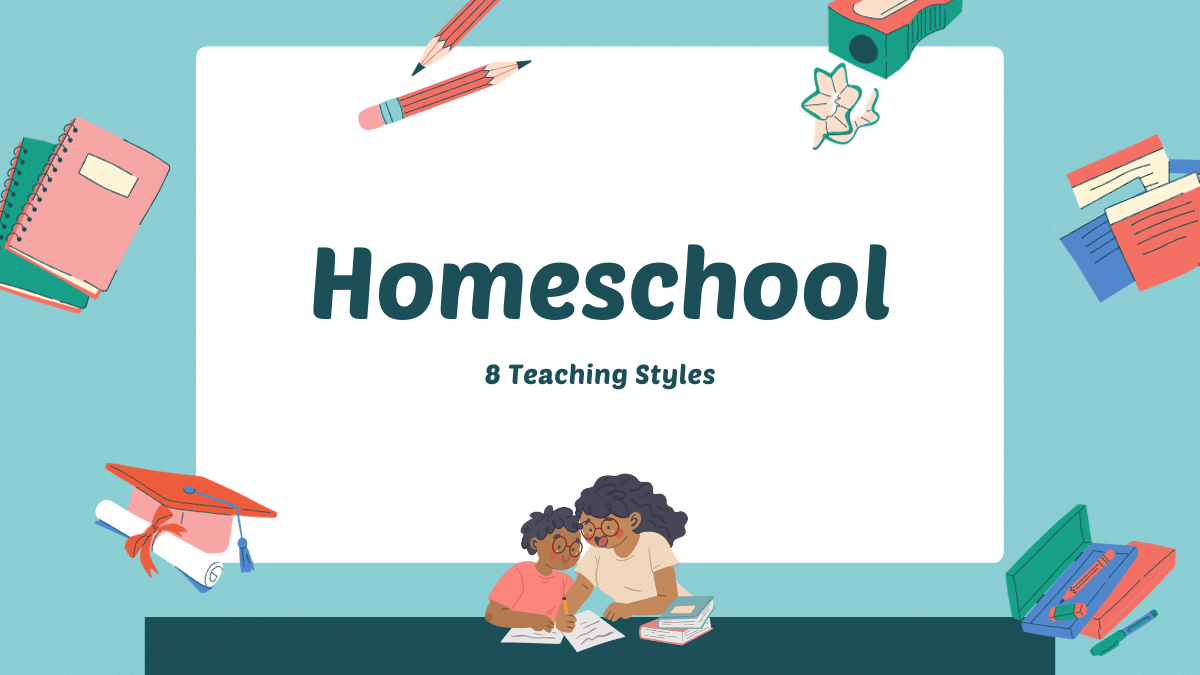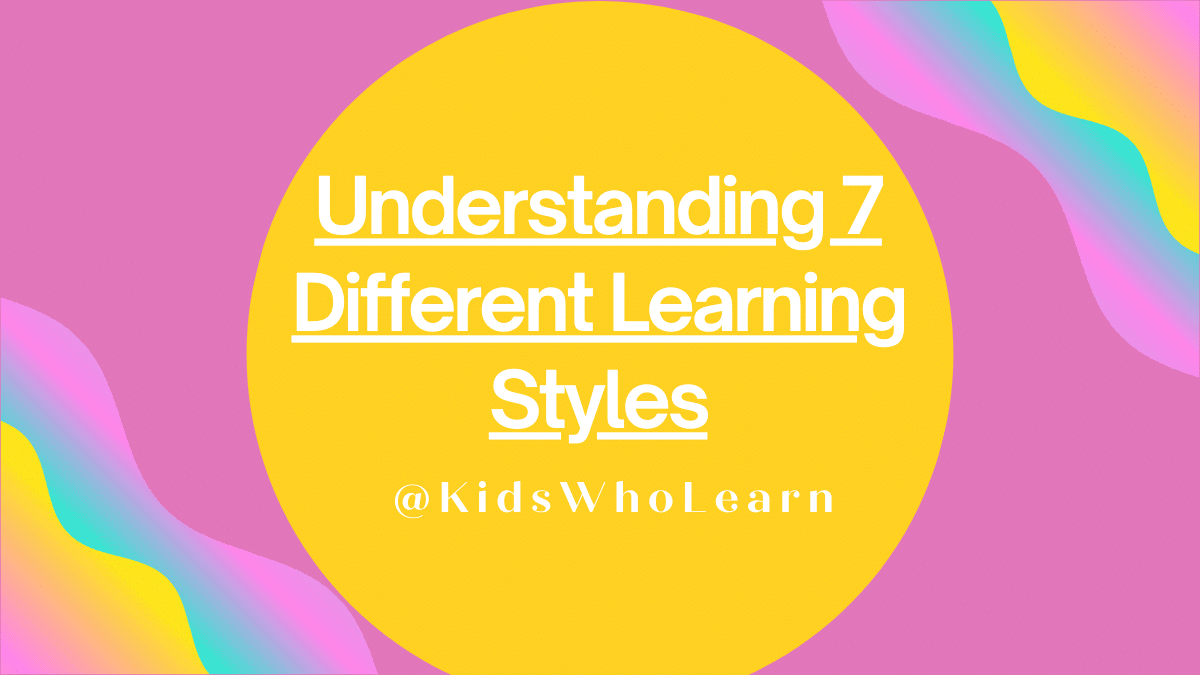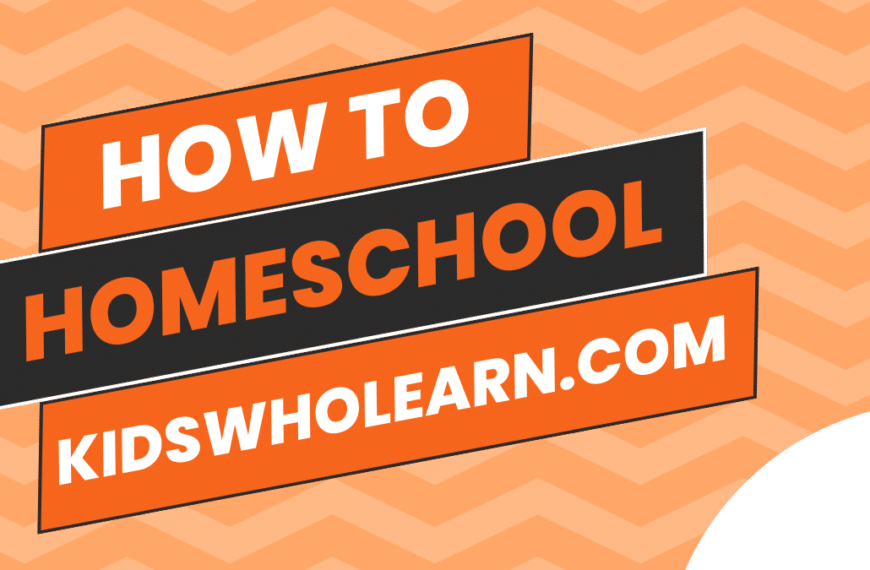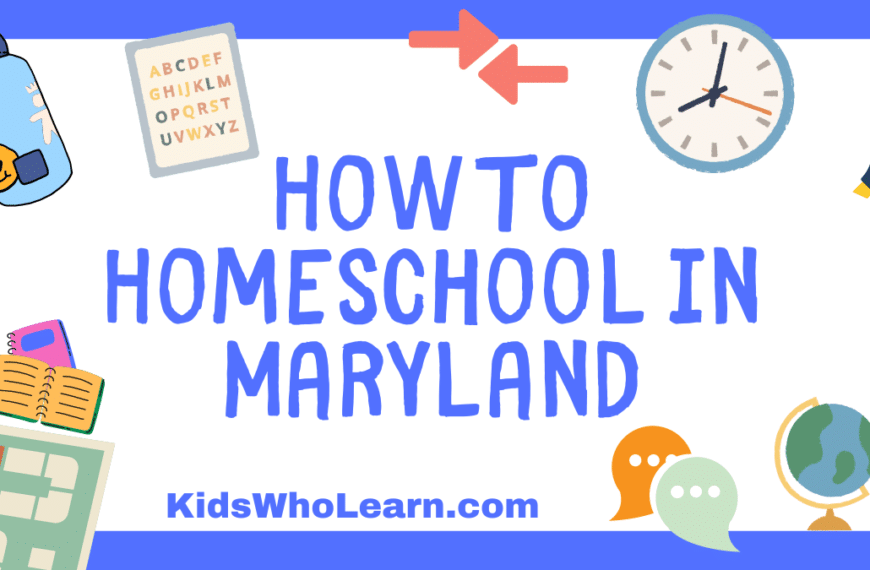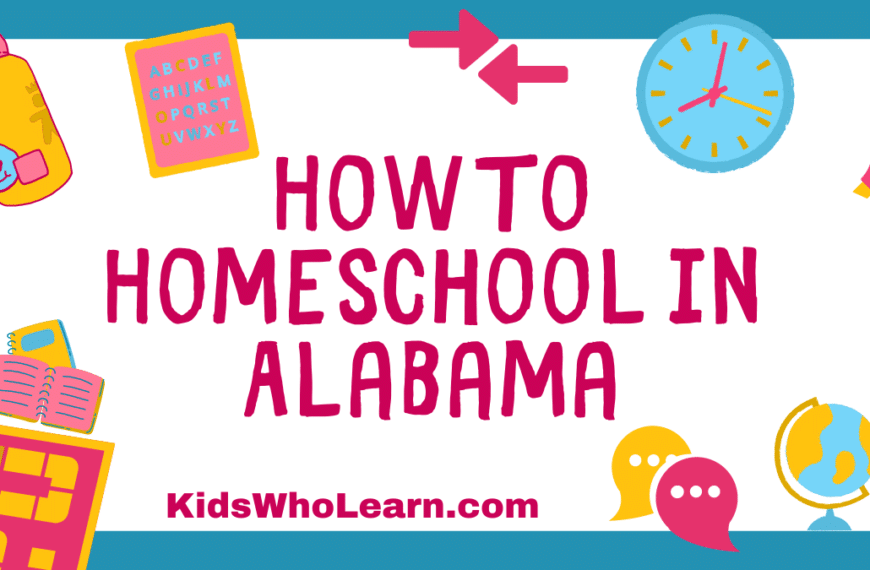Homeschooling has become an increasingly popular choice for families seeking a more personalized and flexible approach to education. With the rise of homeschooling, there has also been an increase in the variety of homeschooling styles and methods available to homeschool families.
Homeschooling styles, also known as homeschool methods, differ from the traditional school system’s approach to education and can be based on various educational philosophies.
This article will explore the different homeschool styles and methods available to homeschooling families. We will examine the unique features of each homeschooling method, the benefits and challenges of each, and how to choose the best homeschooling method for your family.
Whether you are a new or seasoned homeschooler, this guide will provide valuable insights into the world of homeschooling styles and help you decide which homeschooling method is suitable for you and your family. We hope this guide will make your homeschool journey easier and benefit your child’s education.
What are the Different Homeschooling Styles?
There are several different homeschooling methods. Each of the different methods is based on a different educational philosophy and emphasizes different approaches to learning and teaching.
Here are some of the most common homeschool styles for school at home. We will go into more detail about each style below.
- Traditional Homeschooling
This style mirrors the traditional schooling approach to education in the public school system, with a structured curriculum and formal instruction. The parent acts as the teacher, and the child follows a set schedule and lesson plan.
- Classical Education
Classical education is based on the educational approach used in ancient Greece and Rome. The classical method emphasizes the study of classic literature, history, and languages. Students learn through the Trivium, which consists of three stages: grammar, logic, and rhetoric.
- Montessori Method
Maria Montessori developed the Montessori method based on her educational philosophy. The Montessori method emphasizes hands-on learning and self-directed exploration. Children work with materials designed to promote their natural curiosity and learning abilities.
- Unschooling
This homeschool style is based on the idea that children learn best when they can follow their interests and passions. This style is also known as child-led learning. The parent acts as a facilitator rather than a teacher, allowing the child to direct their learning.
- Eclectic
This style involves a mix of different teaching approaches, depending on the needs and interests of the child. The parent may choose to use elements of traditional, classical, Montessori, or unschooling methods, as well as other approaches. Eclect unit studies combine different educational philosophies and resources to create a customized homeschool curriculum that meets the unique educational goals of each child.
- Charlotte Mason Method
The Charlotte Mason homeschool method is a homeschooling approach that emphasizes the use of living books, nature study, and narration to engage children in a well-rounded education. It is focused on developing a child’s character, habits, and love for learning, with a strong emphasis on forming good practices and moral and spiritual growth.
- School At Home Approach
The school-at-home approach is a homeschooling method that mimics a traditional public or private school using textbooks, workbooks, and a structured daily schedule. This approach can be practical for families seeking a rigorous and academically-focused education. Still, it may only be suited to some students, as it can be rigid and limiting.
- Waldorf Education Method
The Waldorf education method is a humanistic and holistic approach that seeks to educate the whole child by integrating academic subjects with artistic and practical activities to support intellectual, emotional, and spiritual growth. It emphasizes creativity, imagination, experiential learning, and developing life skills such as empathy and social awareness.
It is important to note that these styles are not mutually exclusive and that many homeschooling families use a combination of approaches. The most effective homeschool teaching style is the one that best fits the needs and interests of the child and the family’s educational goals.
What is Traditional Homeschooling?
Traditional homeschooling is similar to the conventional schooling used in public schools.
In this style, the parent acts as the primary teacher and is responsible for providing instruction and guidance to the child. The homeschool curriculum is often structured and may follow a set schedule, with the parent setting the pace of learning and monitoring the child’s progress.
The traditional homeschool teaching style typically involves using textbooks, workbooks, and other written materials, as well as lectures and demonstrations by the parent. The parent may assign homework and assessments, such as tests and quizzes, to measure the child’s understanding and progress.
What Are The Pros and Cons of Traditional Homeschooling?
Pros of Traditional Homeschooling
One of the benefits of the traditional homeschool teaching style is that it provides a structured and organized approach to learning. The parent can ensure that the child covers all of the necessary topics and concepts and adjust the homeschool curriculum to meet the child’s individual needs and interests.
Cons of Traditional Homeschooling
Some critics argue that the traditional homeschool teaching style can be passive and disengaging for the child and may not encourage critical thinking and creativity. Parents need to use this style to supplement it with other teaching methods, such as hands-on learning and field trips, to create a more engaging and dynamic learning environment.
What Is Classical Homeschooling?
Classical homeschooling is based on the classical approach used in ancient Greece and Rome. The classical method emphasizes the study of classic literature, history, and languages.
Classical education is designed to develop the child’s critical thinking, logic, and communication skills and their appreciation for classical works of art and literature.
The classical education model is organized into three stages, known as the Trivium:
- Grammar Stage
This stage, which typically lasts from kindergarten to fourth grade, focuses on developing the child’s language and communication skills. The child learns the basic rules of grammar, vocabulary, and spelling and basic facts about history, science, and math.
- Logic Stage
This stage, which typically lasts from fifth to eighth grade, focuses on developing the child’s logic and reasoning skills. The child learns how to analyze and evaluate information, make connections between different subjects, and think critically about complex concepts.
- Rhetoric Stage
This stage, which typically lasts from ninth to twelfth grade, focuses on developing the child’s communication skills. The child learns how to write persuasively, deliver speeches, and engage in debates. The child also studies classical works of literature, history, and philosophy and develops an appreciation for the arts.
The classical approach often involves using classical texts and curricula, such as the Great Books of the Western World or the Well-Trained Mind curriculum. For classical homeschoolers, the parent acts as the teacher and is responsible for guiding the child through the stages of the Trivium.
What Are The Pros and Cons of Classical Homeschooling?
Pros of Classical Homeschooling
One of the benefits of the classical homeschool teaching style is that it provides a rigorous and comprehensive approach to education, focusing on developing the child’s critical thinking and communication skills. Because this approach emphasizes the study of classical literature, history, and philosophy, it can provide a strong foundation for high school students.
Cons of Classical Homeschooling
It can be challenging for parents who need to become more familiar with classical texts and curricula and may not be suitable for children with different learning styles or interests.
What is the Montessori Method?
Montessori homeschooling is based on the Montessori principles of Maria Montessori. Like other Montessori schools, Montessori homeschooling emphasizes the child’s independence, self-directed learning, and hands-on experiences. In this style, the parent acts as a facilitator, providing guidance and support to the child as they explore and discover the world around them.
The Montessori homeschool teaching style is designed to meet the child’s individual needs and interests and to promote their natural curiosity and creativity. The child is encouraged to take an active role in their own learning and is given the freedom to choose their own activities and pace of learning.
Montessori homeschooling often involves the use of specialized Montessori materials and curriculum, which are designed to support the child’s learning and development. These materials are often hands-on and interactive, allowing the child to explore and discover concepts concretely and meaningfully.
What Are The Pros and Cons of the Montessori Method?
Pros of Montessori Method
One of the benefits of the Montessori method is that it promotes the child’s natural love of learning and encourages them to become independent and self-motivated learners. It can be an excellent fit for younger children still developing their motor skills and natural curiosity.
Cons of Montessori Method
It can be challenging for parents who need to become more familiar with the Montessori philosophy and curriculum. It may not be suitable for children who thrive in a more structured and traditional learning environment.
The Montessori method is a child-centered approach that emphasizes the child’s individuality, creativity, and independence and encourages them to explore and discover the world in their way.
What is the Unschooling Method?
The unschooling method, also known as child-led or interest-led learning, is a non-traditional approach to homeschooling that emphasizes the child’s natural curiosity and interests. In this style, the parent acts as a facilitator, providing support and resources as the child explores and learns about topics that interest them.
The unschooling approach is designed to be flexible and adaptable, with no set homeschool curriculum or schedule. The child is given the freedom to choose their own activities and pace of learning and is encouraged to follow their own interests and passions.
The unschooling approach often involves using real-life experiences, such as field trips, internships, community service projects, online resources, and self-directed learning materials. Homeschool parents play a supportive role, helping the child to find resources and connect with mentors or experts in areas of interest.
What Are The Pros and Cons of the Unschooling Method?
Pros of the Unschooling Method
One of the benefits of the unschooling homeschool style is that it promotes the child’s natural love of learning and encourages them to take ownership of their education.
Cons of the Unschooling Method
It can be challenging for parents uncomfortable with letting go of control over their child’s learning. It may not be suitable for children who thrive in a more structured and traditional learning environment.
Overall, the unschooling homeschool style is a child-centered approach that emphasizes the child’s individuality, creativity, and independence and encourages children to learn in a meaningful and relevant way.
What is Eclectic Homeschooling?
Eclectic homeschooling is a flexible and personalized approach to homeschooling that combines elements of different teaching styles and methods depending on the needs and interests of the child. For eclectic homeschoolers, the parent acts as a facilitator, selecting and adapting curriculum and resources to meet the child’s individual needs.
Eclectic homeschooling is designed to be flexible and adaptable, allowing the parent to tailor the homeschool curriculum and teaching methods to suit the child’s learning style, interests, and goals. The parent may draw from various sources, such as textbooks, online resources, hands-on activities, and real-life experiences, to create a customized learning experience for the child.
Eclectic homeschooling uses a unity-study curriculum. Eclectic unit studies are an approach to homeschooling that integrates multiple subjects and activities around a central theme or topic. This approach can be highly flexible and customizable, allowing families to tailor their child’s education to their unique needs and interests.
Unit studies typically involve selecting a particular topic, such as ancient Egypt and then incorporating history, literature, math, science, and other subjects into a series of lessons and activities that revolve around that theme. This can create a more integrated and engaging learning experience, as students can see the connections between different subjects and apply their knowledge in various ways.
Eclectic homeschoolers experience a mix of structured and unstructured learning activities, with a focus on hands-on experiences and real-world connections. For the eclectic homeschooler, the parent plays a supportive role, helping the child to set goals, track progress, and stay motivated.
What Are The Pros and Cons of Eclectic Homeschooling?
Pros of Eclectic Homeschooling
One of the benefits for the eclectic homeschooler is that it allows the parent and child to create a customized learning experience that meets the child’s individual needs and interests.
Cons of Eclectic Homeschooling
It can be challenging for parents uncomfortable with designing their curriculum and teaching methods. It may require more time and effort to plan and implement.
Overall, this homeschooling style is a flexible and personalized approach that emphasizes the child’s individuality and allows for a customized learning experience that meets the child’s needs and interests.
What is the Charlotte Mason Method?
The Charlotte Mason approach is a homeschooling method named after its founder, Charlotte Mason, a British educator who lived in the late 19th and early 20th century. This homeschooling method emphasizes that children are born persons and should be treated as individuals with unique abilities and talents.
The Charlotte Mason homeschool method is based on the principles of classical education. It focuses on developing a child’s character, habits, and love for learning.
One of the key features of the Charlotte Mason homeschool method is the use of “living books,” which are high-quality, narrative-driven books that present ideas and concepts engagingly and excitingly. The Charlotte Mason homeschool method also emphasizes nature study, which involves regular outdoor exploration and observation of the natural world, and the use of narration, in which children are encouraged to retell what they have learned in their own words.
The Charlotte Mason education is designed to be well-rounded, including various subjects such as literature, history, science, mathematics, and foreign languages. This homeschooling method emphasizes the importance of hands-on learning experiences and appreciation of art and music.
The Charlotte Mason approach strongly emphasizes the formation of good habits and character development, as well as the cultivation of a child’s moral and spiritual growth. This approach aims to educate the whole person, focusing on developing the child’s intellectual, ethical, and spiritual capacities.
What Are The Pros and Cons of the Charlotte Mason Method?
Pros of the Charlotte Mason Method
This popular homeschooling style is child-centered and emphasizes unique interests, character development, literature-based learning, and hands-on experiences, making learning more engaging and meaningful. This homeschooling style can help children become well-rounded individuals with improved reading and comprehension skills, a love of learning, and strong moral values. It is commonly recommended for the middle ages.
Cons of the Charlotte Mason Method
This homeschooling style may require more planning and preparation, may need to be more structured for some children, may not be suited for all children, and may limit the use of technology in learning. Some children may respond poorly to the emphasis on character development or using living books. Families may need to supplement with other resources or other homeschool styles.
What Is the School-At-Home Approach?
School-at-home is a homeschooling method that seeks to replicate the traditional school experience within the home. Families who choose this approach typically use textbooks, workbooks, and other traditional classroom materials and often follow a structured daily schedule or lesson plan.
The school-at-home approach is often chosen by families who want to ensure that their child receives a rigorous and academically-focused education but prefer to provide this education in the comfort and safety of their home rather than in a traditional school setting.
While this approach can be practical for some families, it is essential to note that there may be better fits for some students, as it can be rigid and may not allow for individualized learning or exploration of personal interests.
What Are The Pros and Cons of the School-At-Home Approach?
Pros of the School-At-Home Approach
School-at-home provides structure and familiarity to children used to a traditional school environment. It allows for the use of established curricula and textbooks to ensure that children are learning essential skills and knowledge.
Cons of the School-At-Home Approach
School-at-home can be inflexible and may not allow for individualized learning or exploration of personal interests. It can be isolating for both children and parents, as there may be limited opportunities for socialization or support from a homeschooling community.
What Is the Waldorf Education Approach?
The Waldorf education method, also known as Steiner education, is a humanistic and holistic approach that is based on the educational philosophy of Rudolf Steiner. The Waldorf education method focuses on nurturing the whole child – body, mind, and spirit – and integrates academic subjects with artistic and practical activities to support the child’s intellectual, emotional, and spiritual growth.
Waldorf schools typically emphasize experiential learning, use storytelling and imaginative play to teach academic subjects, and delay the introduction of reading and writing until the child is developmentally ready. The Waldorf education method can be adapted for homeschooling families. However, it typically requires significant planning and preparation to implement effectively.
What Are The Pros and Cons of the Waldorf Education Approach?
Pros of the Waldorf Education Approach
This homeschool style fosters creativity, imagination, and critical thinking and seeks to educate the whole child rather than just focusing on academic achievement. It provides a holistic and experiential approach to learning that can be highly engaging and meaningful for students. It can help children develop essential life skills such as empathy, social awareness, and emotional intelligence, as it emphasizes the importance of relationships, community, and the natural world. Waldorf education promotes a healthy and balanced lifestyle, supporting children’s physical and emotional well-being.
Cons of the Waldorf Education Approach
This homeschool style can be challenging to implement in a homeschooling setting, as it requires a significant amount of planning and preparation and a deep understanding of the philosophy and principles underlying the approach. Some have also criticized it for being too focused on the child’s spiritual and emotional development and needing to emphasize academic rigor and preparation for the real world. Some also argue that delaying the introduction of reading and writing can put children at a disadvantage in a highly literate society.

